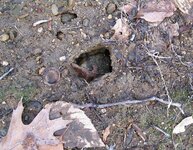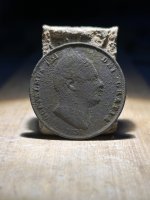lostlake88
Hero Member
I am a newbie. A couple of weeks ago I found a V nickel a 11" deep. This is my deepest. In regards to a post I was reading earlier that I couldn't find, "How deep a coin can migrate in depth". Well all of this is conjecture untill someone takes the time to measure an emmense amount of variables associated with "coin migration". It all depends on the soil in my view. clay, silty clay, silty sand, sand, loam, silty loam, loess, silty loess etc.... then add deposition materials or glacial till? I have studied the Unified Soil Classification System and I have access to equipment that could put a least a dent in the mystery. Maybe i will do it. I do not think that freezing and thawing would effect "coin migration" greatly. I think if the coin manages to edge itself, or less than paralel with the surface, during a hard rain it could sink quicker than normal in any saturated soil. Water tables an porosity water pressure have a great deal to do with this I suspect. Does anyone else have any ideas?



 " or'
" or' 

